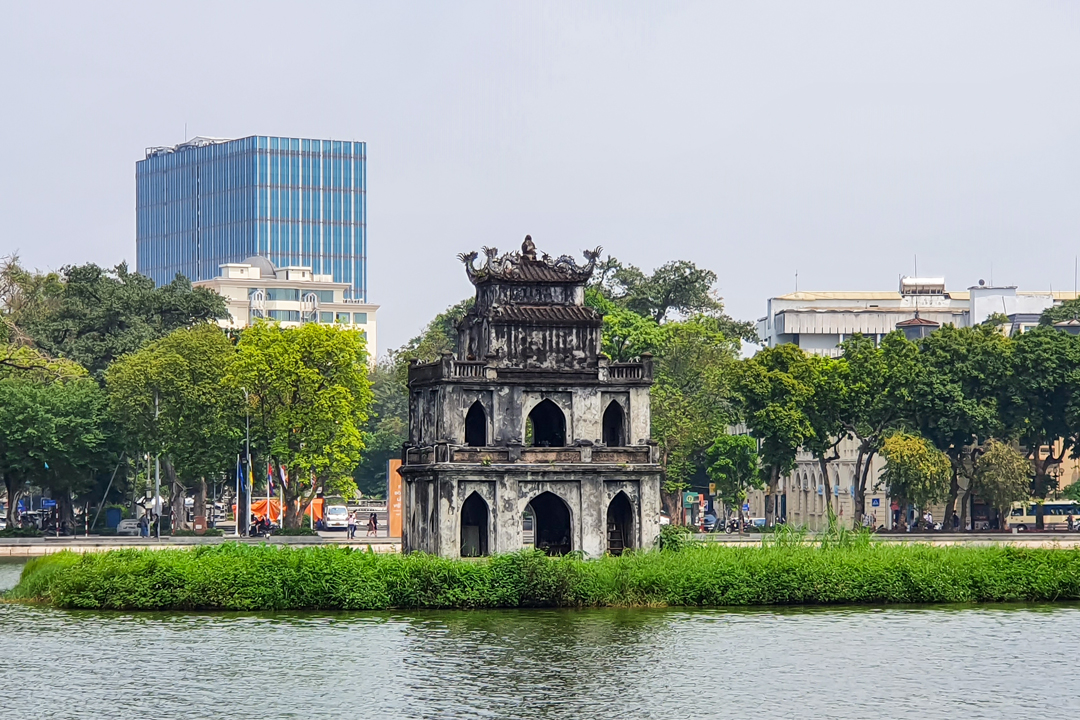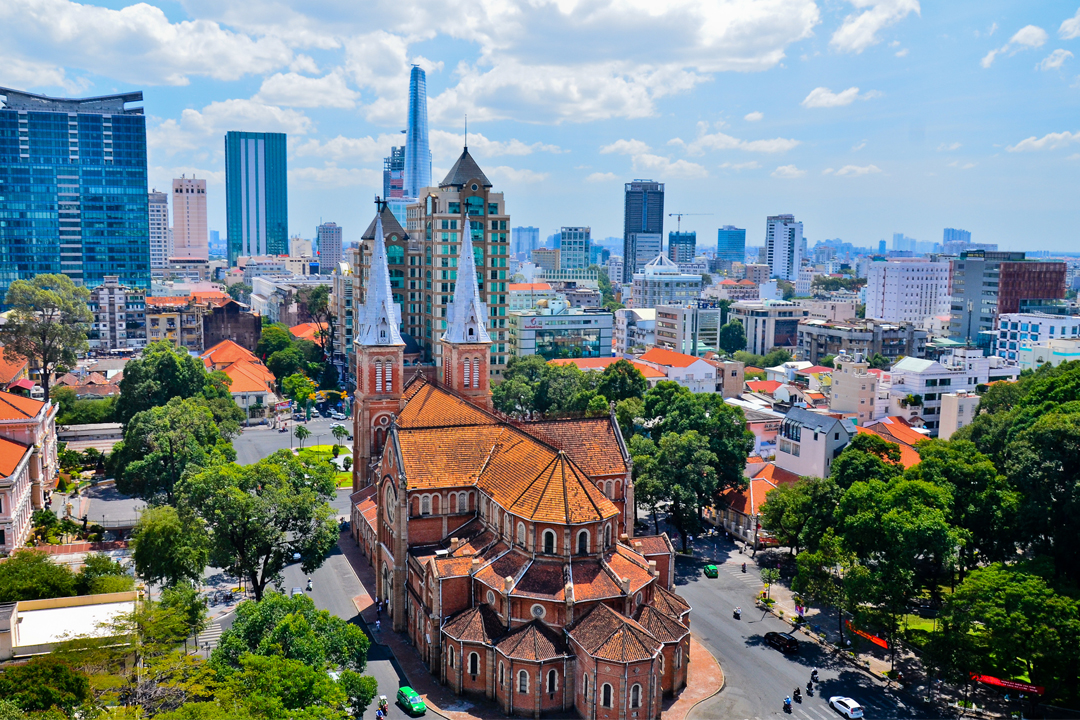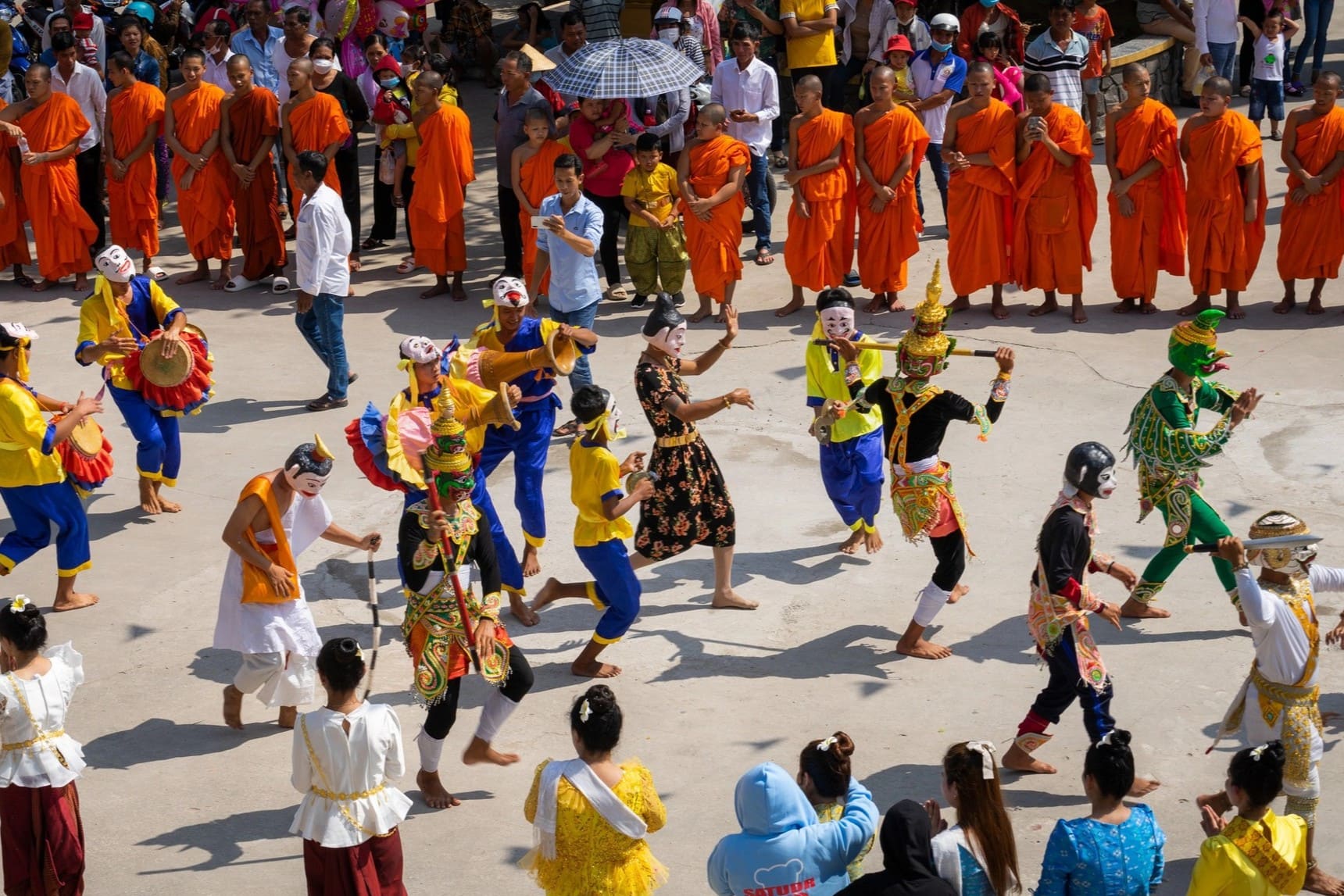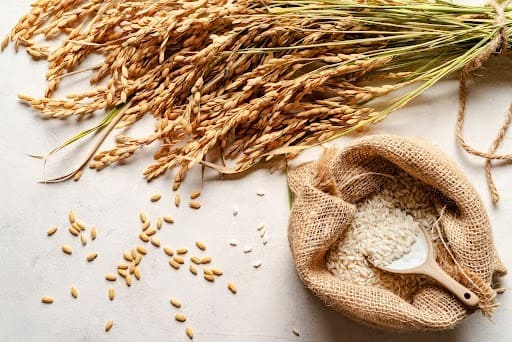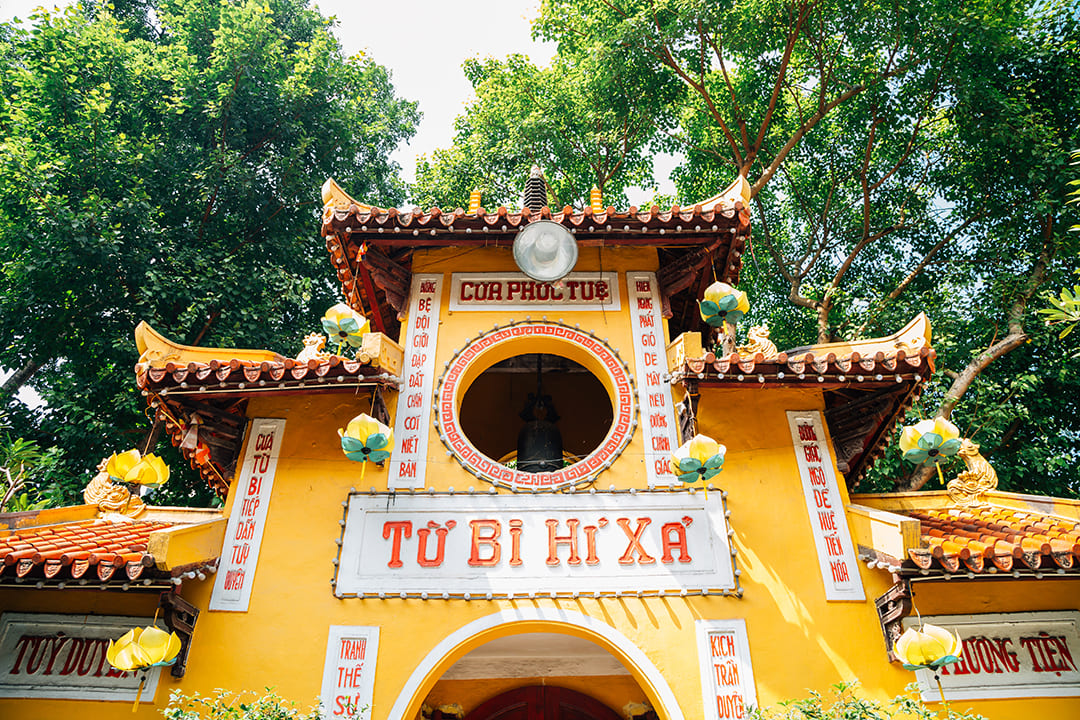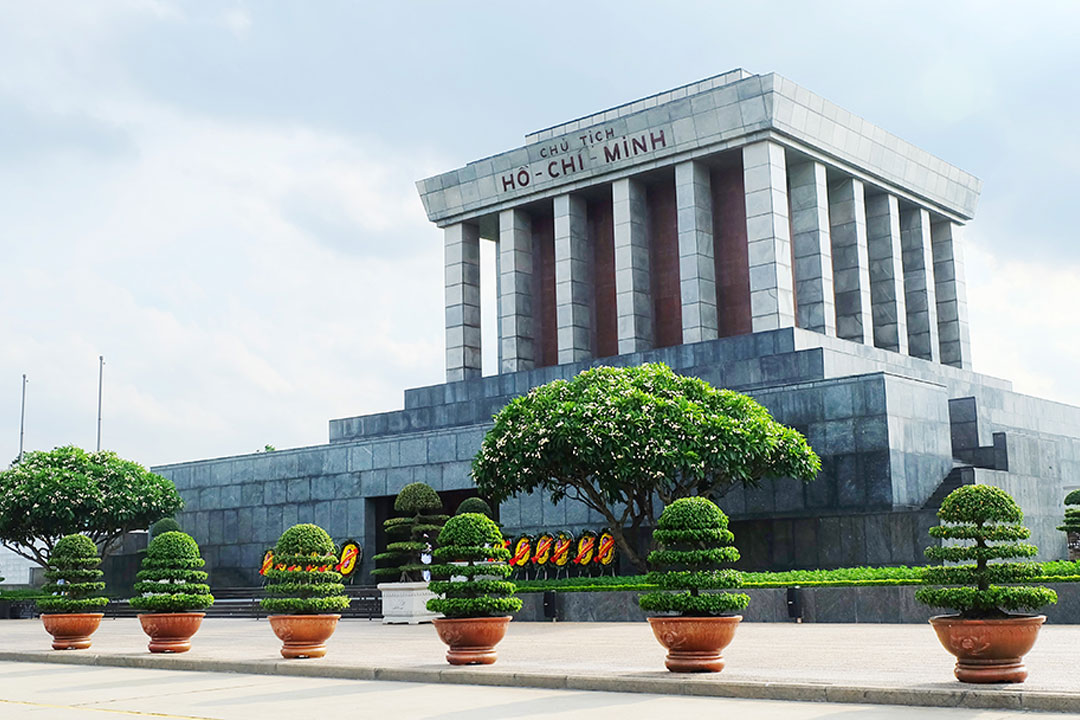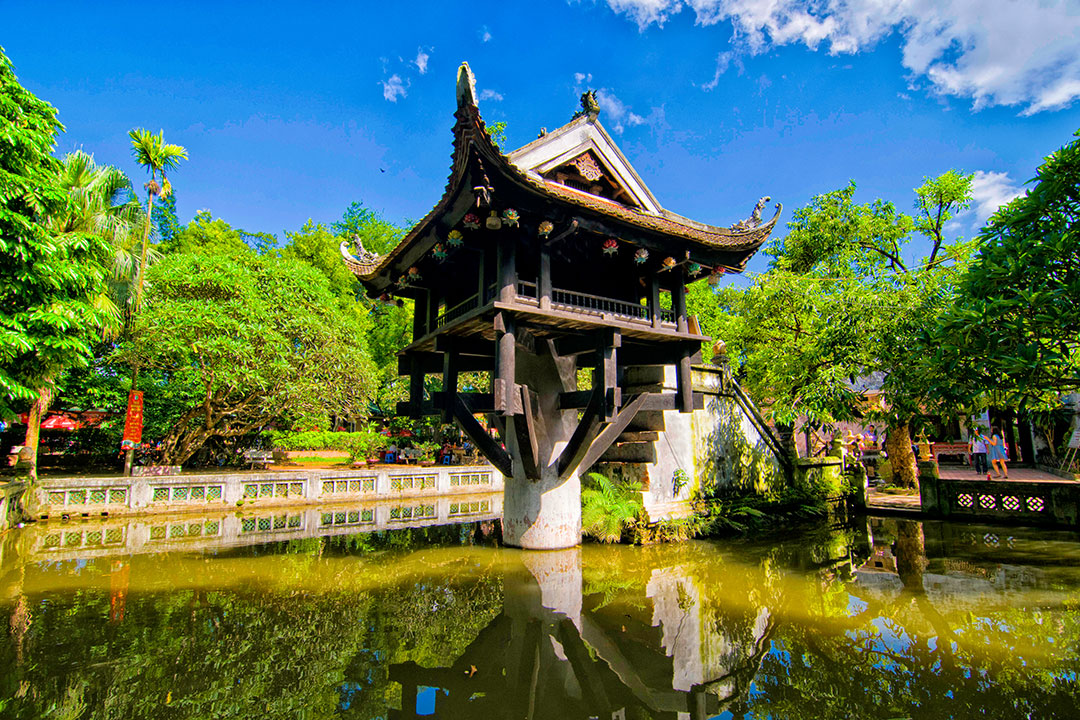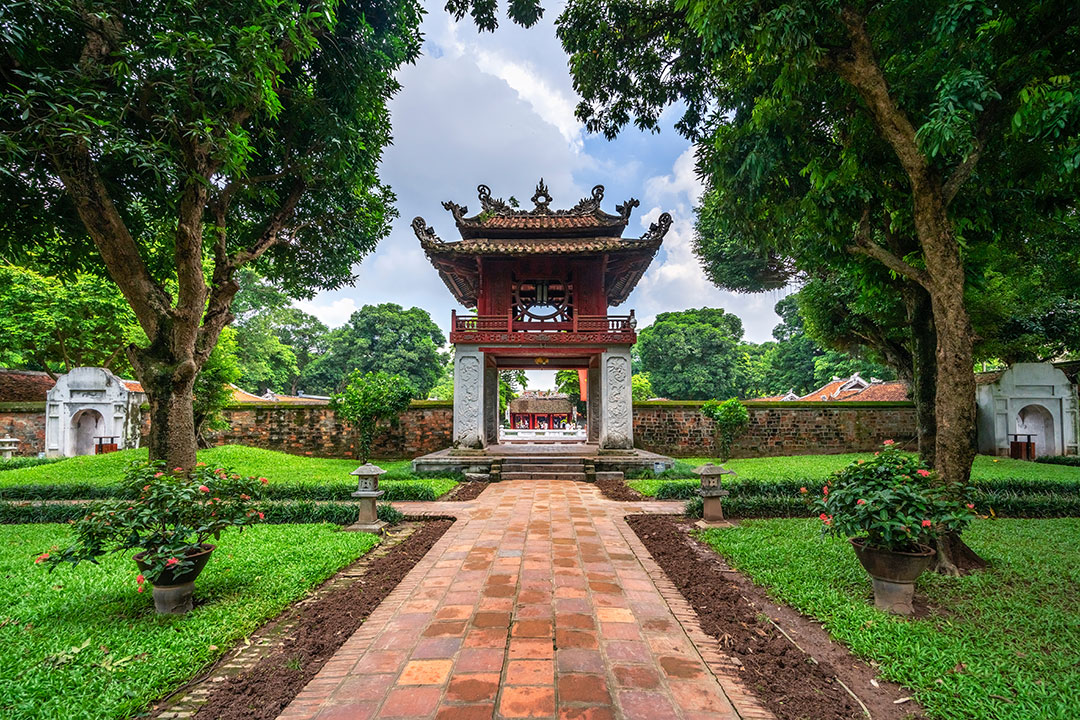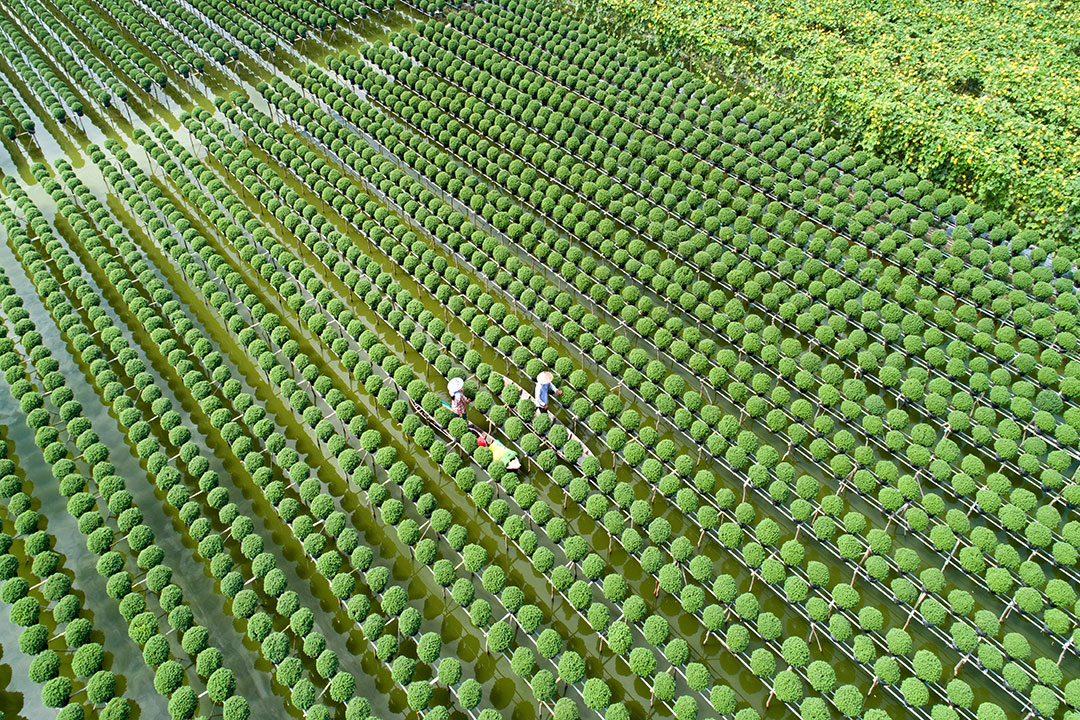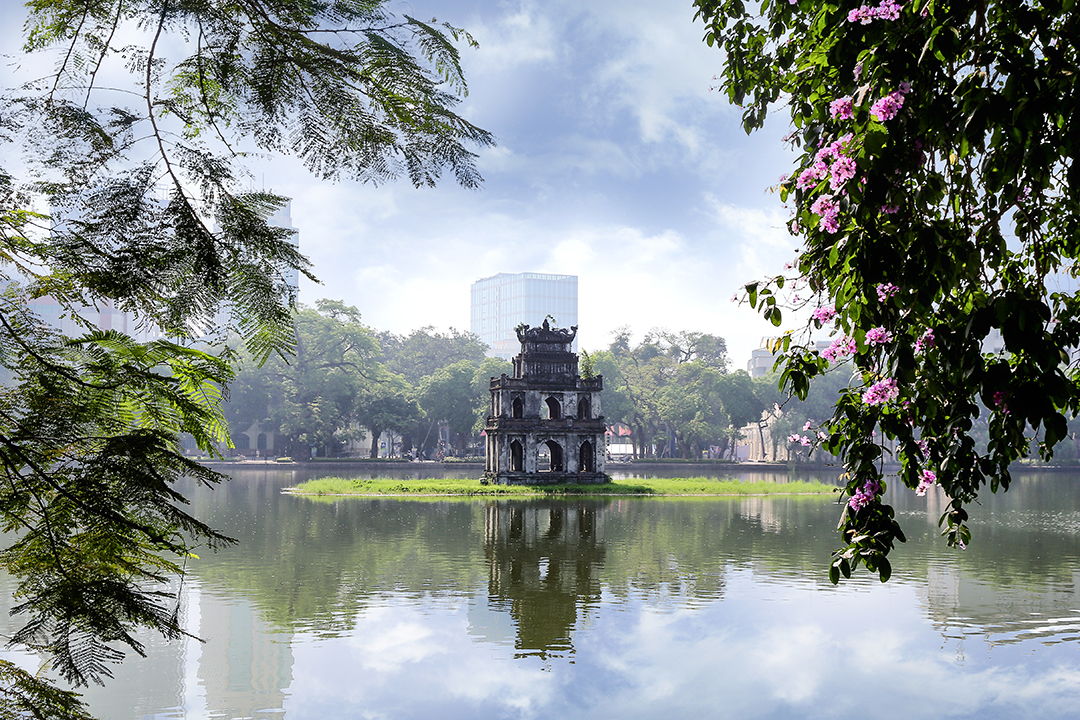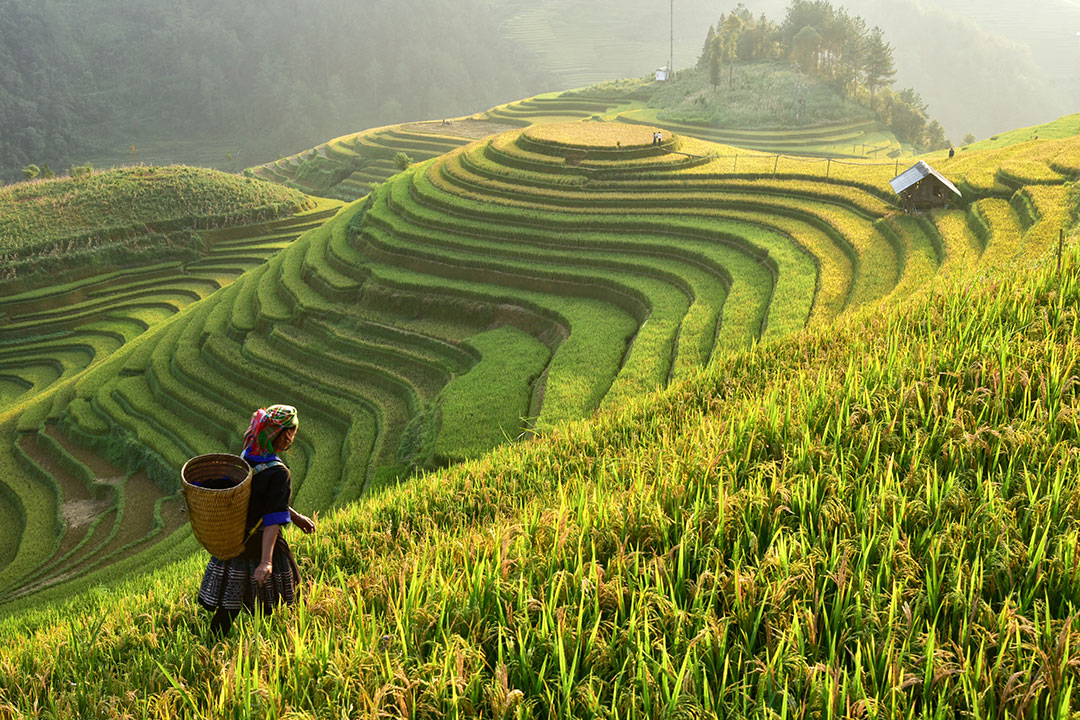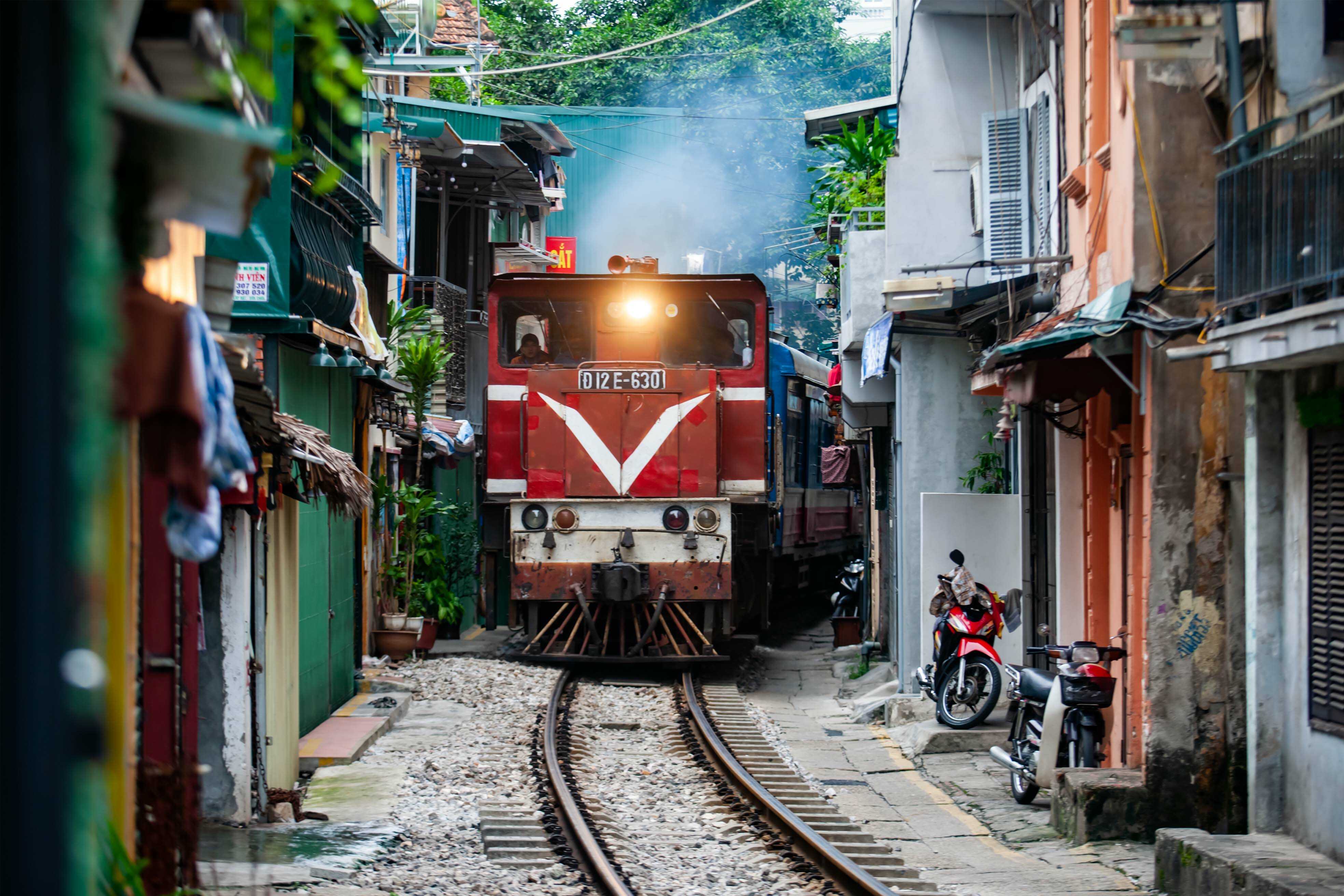Quan Su Pagoda: History, Architecture, Buddhist Traditions & Local Experiences
Quan Su Pagoda stands as an ancient structure and a symbol of cultural resonance and spiritual tranquility in the heart of Hanoi. For travelers seeking to unravel the tapestry of Vietnam’s rich heritage, this historic temple is more than a mere tourist attraction. It's a gateway into centuries-old traditions and customs that continue to influence contemporary life. Many find themselves drawn here, looking for more than picturesque sights. They seek understanding and connection with the deeper essence of this Southeast Asian gem. Rich in intricate architecture and peaceful spaces, Quan Su Pagoda offers a deeper, more meaningful journey through Vietnam. Let’s explore this pagoda with GTrip through this article.
Introduction to Quan Su Pagoda
Quan Su Pagoda stands as one of Hanoi's most significant Buddhist temples, representing both spiritual heritage and administrative importance in Vietnam's Buddhist community. This historic sanctuary offers visitors a glimpse into authentic Vietnamese Buddhist practices while serving as the headquarters for the Vietnam Buddhist Sangha. Unlike many temples that blend folk religions with Buddhism, Quan Su maintains a pure Buddhist tradition. It’s particularly interesting for travelers seeking to understand the core principles of Vietnamese Buddhism.
Where is Quan Su Pagoda?
Location: 73 Quan Su Street, Cua Nam Ward (73 Quan Su Street, Tran Hung Dao Ward, Hoan Kiem District, Hanoi)
Quan Su Pagoda occupies a convenient position approximately 1 kilometer southwest of Hoan Kiem Lake, making it easily accessible for tourists exploring central Hanoi. Many visitors combine their trip to the pagoda with other nearby attractions in the Old Quarter area.
The temple's central location places it within walking distance of many popular hotels and guesthouses in Hanoi. Surrounded by narrow streets filled with local life, the pagoda creates a peaceful contrast to the energetic urban environment outside its walls. Despite being situated in one of Hanoi's busiest districts, the temple grounds provide a tranquil retreat from the city's constant motion and noise.
Who is worshiped at Quan Su Pagoda?
Quan Su Pagoda primarily honors Gautama Buddha, also known as Shakyamuni Buddha, the historical founder of Buddhism whose teachings form the foundation of the religion. His serene statue occupies the central position on the main altar, representing enlightenment and the path to spiritual liberation. You will notice his distinctive meditation posture and hand gestures that symbolize important Buddhist concepts.
Amitabha Buddha (A Di Da) also receives devotion at the pagoda, recognized for his infinite compassion and the promise of rebirth in the Western Pure Land. Many worshippers at Quan Su offer prayers to Amitabha, seeking his guidance and protection. Alongside him, Avalokiteshvara Bodhisattva (Quan Am) holds special significance as the embodiment of compassion and mercy, particularly venerated by those seeking relief from suffering.
The temple honors additional bodhisattvas, including Manjusri (Van Thu), representing wisdom, and Ksitigarbha Bodhisattva, known for his vow to help all sentient beings. Notably, the pagoda also pays tribute to respected National Buddhist Teachers such as Zen Master Nguyen Minh Khong from the Ly dynasty, who made significant contributions to Vietnamese Buddhism. Unlike many Vietnamese religious sites that incorporate folk deities or Mother Goddesses, Quan Su Pagoda maintains a strict focus on Buddhist principles and figures. This reflects its role as the administrative center for Vietnam's Buddhist community.
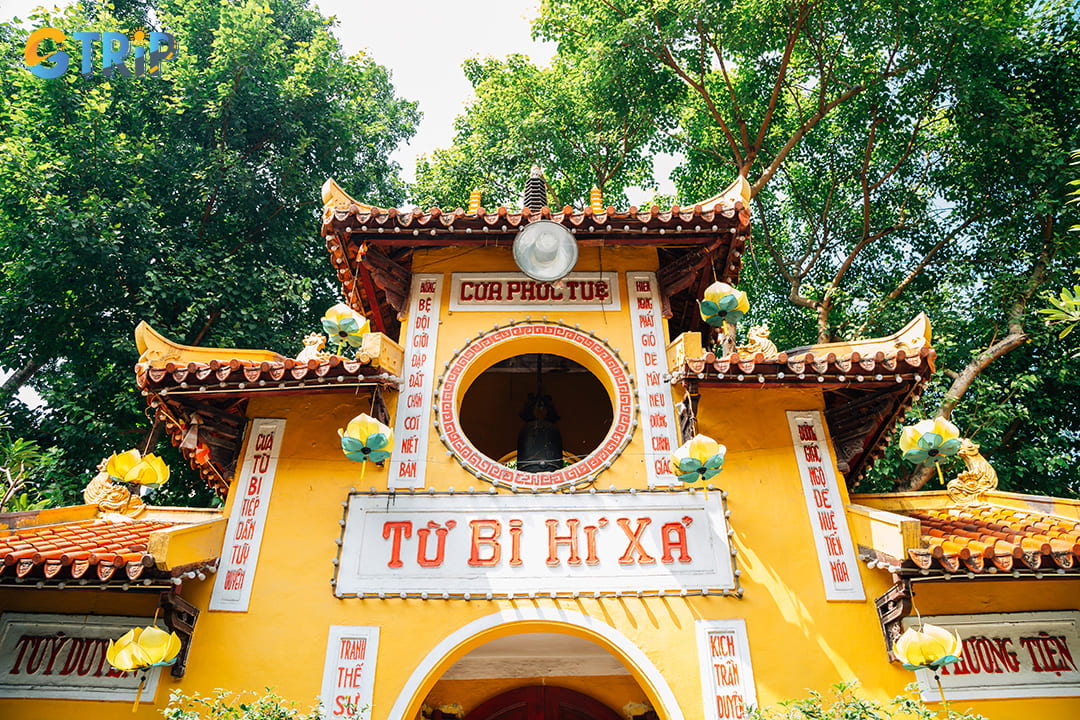
Quan Su Pagoda primarily honors Gautama Buddha, the historical founder of Buddhism, whose teachings form the foundation of the religion
The origins and historical evolution of Quan Su Pagoda
Quan Su Pagoda boasts a rich history dating back to the mid-15th century during the Tran Dynasty. Built under the reign of King Tran Du Tong around 1479, the pagoda initially served a unique diplomatic purpose in ancient Vietnam's capital. The name "Quan Su" perfectly reflects the pagoda's original function. It translates to "House of Envoys" or "Embassy" in English. This historical site was established as a reception venue for Buddhist envoys from neighboring countries like Chiem Thanh (Champa), Van Tuong, and Ai Lao (Laos) who visited Thang Long Citadel.
In its earliest form, Quan Su Pagoda consisted of simple cottages dedicated to worship and diplomatic functions. The humble beginning of this religious monument transformed significantly during Emperor Le The Tong's reign, when it was expanded into a much more substantial temple complex that reflected its growing importance. Throughout its centuries-long existence, Quan Su Pagoda has undergone multiple renovations to preserve its cultural and architectural heritage. Major restorations took place in 1815 and 1942, focusing on maintaining the pagoda's distinctive features, including intricate wooden carvings, traditional red-tiled roofs, and structural integrity.
The pagoda's significance in Vietnamese Buddhism expanded in 1934 when it became the official headquarters of the Tonkin Buddhist Association. This designation cemented Quan Su's status as a center for Buddhist activities in northern Vietnam during the French colonial period. A substantial refurbishment in 1942 marked another pivotal moment in the pagoda's history. Led by renowned architects Nguyen Xuan Tung and Nguyen Ngoc Ngoan, this renovation carefully balanced preserving historical elements while ensuring the structure could withstand the passage of time.
Today's tourists experience a religious site shaped by nearly six centuries of Vietnamese history, diplomatic relations, and Buddhist traditions. All of these are preserved within the walls of this remarkable Hanoi landmark.
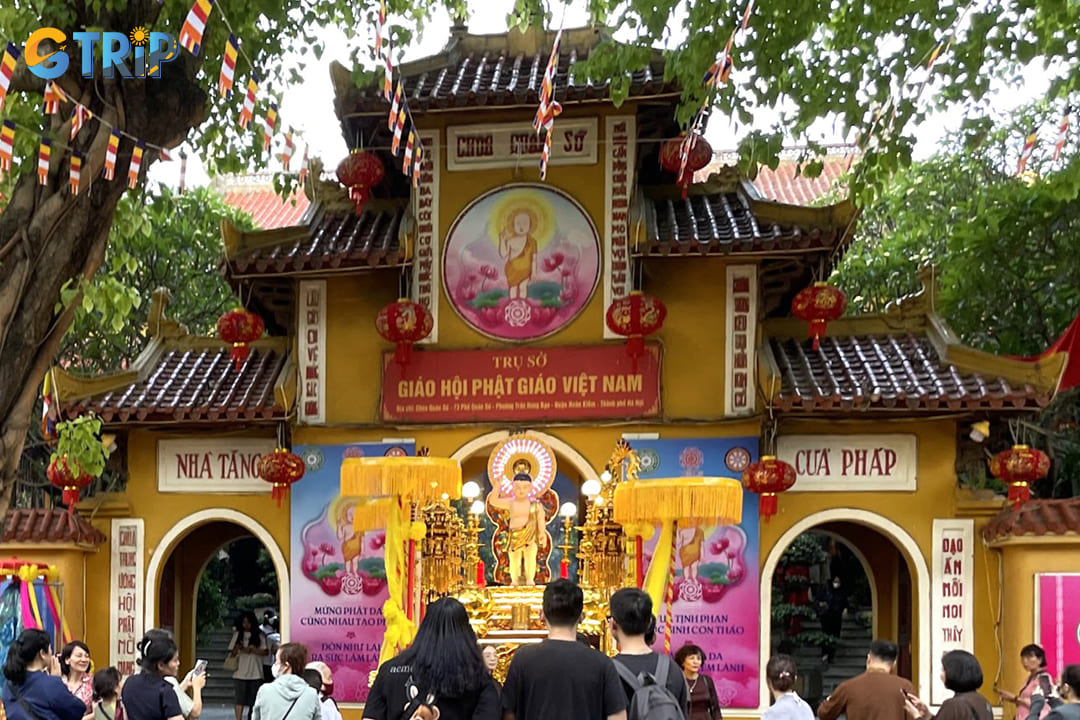
Today's tourists experience a religious site shaped by nearly six centuries of Vietnamese history, diplomatic relations, and Buddhist traditions
The architecture of Quan Su Pagoda
Quan Su Pagoda stands as a remarkable example of traditional Northern Vietnamese temple architecture, embodying centuries of Buddhist design philosophy. The pagoda's layout follows specific geometric principles that carry symbolic meaning within Vietnamese Buddhist traditions, creating a harmonious and spiritually significant space.
The pagoda's campus features a distinctive dual-symbolic layout that Vietnamese architects often incorporated into important religious structures. Internally, the buildings form the shape of the Chinese character "Cong" (工), representing humanity's connection to the divine. Externally, the complex takes the shape of the character "Quoc" (國), symbolizing the nation and highlighting the pagoda's historical significance to Vietnamese Buddhism.
A magnificent Triple-arched gate marks the entrance to the pagoda, featuring three gracefully curved roof layers that represent the three realms of existence in Buddhist cosmology. The central bell tower stands prominently at the front of the complex, housing an ancient bronze bell that calls the faithful to prayer and marks significant ceremonial occasions.
Tourists enter through the imposing gate and walk across a meticulously paved courtyard that serves as a transitional space between the secular world and the sacred grounds. Eleven stone steps lead up to the main hall, each symbolically representing a step toward enlightenment on the Buddhist path.

Eleven stone steps lead up to the main hall, each symbolically representing a step toward enlightenment on the Buddhist path
The main hall represents the architectural heart of Quan Su Pagoda, featuring:
- A square foundation symbolizes stability and the four cardinal directions
- Two distinct floor levels for different ceremonial purposes
- Surrounding corridors that allow for meditative walking practices
- Traditional wooden beam construction using ancient joinery techniques
- Ornate roof brackets (dougong) supporting the expansive eaves without nails
The lower floor serves as a moisture-proof meditation hall where monks and devotees gather for daily practice. The upper floor houses the revered Tam Bao Palace (Three Jewels Palace), representing Buddha, Dharma, and Sangha-the three foundational elements of Buddhism. Inside the Buddha Hall, you encounter an atmosphere of solemn reverence created through:
- Meticulously gilded Buddha statues are arranged on multiple tiers
- Intricate wooden altars featuring traditional Vietnamese craftsmanship
- Ancient bronze incense burners and ceremonial objects
- Hand-painted panels depicting scenes from Buddhist sutras
- Soft natural lighting filtered through paper windows
The highest altar tier displays the Three Buddhas of the Three Worlds, with Amitabha Buddha occupying the central position. Flanking Amitabha are the compassionate Bodhisattvas Avalokiteshvara and Mahasthamaprapta, forming a trinity representing wisdom and mercy.
The second tier presents Shakyamuni Buddha (the historical Buddha) accompanied by his principal disciples, Venerable Ananda and Kasyapa. The lowest tier features the Nine Dragons Seat positioned between statues of Avalokiteshvara and Ksitigarbha, the bodhisattva who vowed to rescue all beings from the hell realms. A mysterious "heavenly staircase" connects the main hall to the rear building, representing the connection between earthly existence and higher spiritual realms. The pagoda's distinctive red-tiled roofs not only create visual harmony but also symbolically offer protection against negative energies and promote prosperity for devotees.
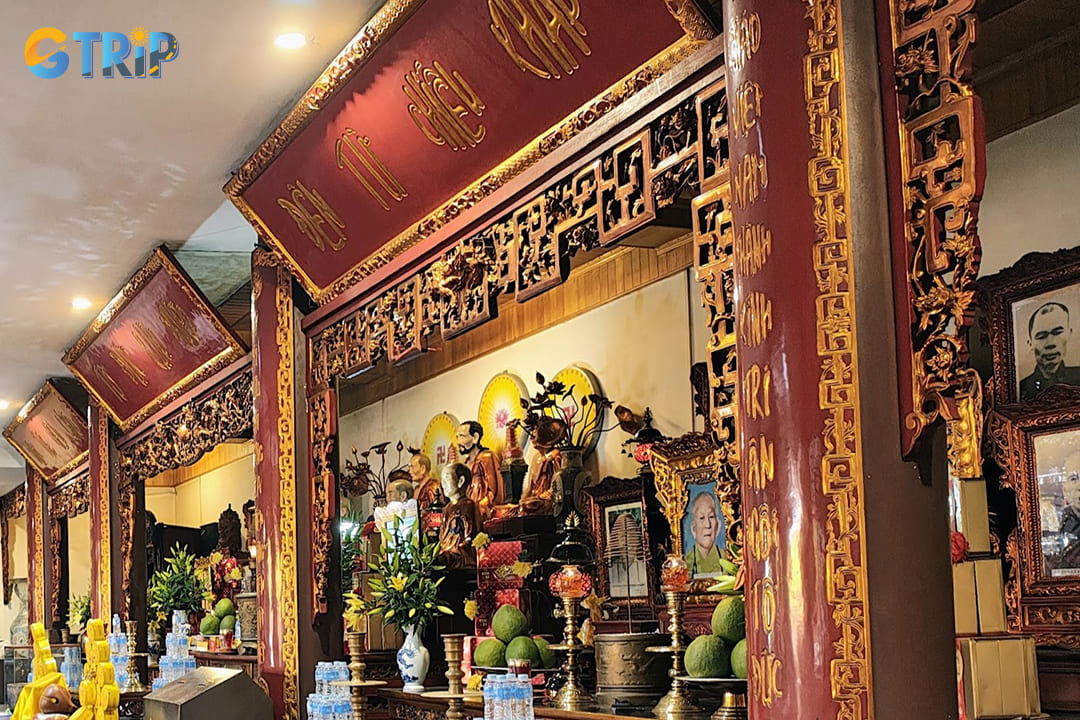
The main hall represents the architectural heart of Quan Su Pagoda
3 things to do at Quan Su Pagoda
Quan Su Pagoda offers tourists a multifaceted experience combining spiritual enlightenment, cultural immersion, and peaceful retreat. As Vietnam's Buddhist headquarters, the pagoda provides unique opportunities to witness religious ceremonies, appreciate traditional architecture, and find tranquility. Here's what you can experience during your visit.
1. Admire the ancient architecture
The pagoda stands as a magnificent example of traditional Vietnamese Buddhist architecture. It features elegant double-tiered roofs with upturned eaves adorned with intricate ceramic dragons and phoenixes. Its bright yellow walls contrast beautifully with dark wooden columns and beams, creating a visual harmony that immediately transports you to ancient Vietnam. The main hall houses ornate altars with gilded details, while carved wooden panels depict scenes from Buddhist teachings and Vietnamese folklore.
Walking through Quan Su Pagoda reveals layers of history in every corner, from the weathered stone steps to the ancient bronze bells hanging in the bell tower. The central courtyard provides an excellent vantage point to admire the symmetrical layout designed according to feng shui principles. Stone incense burners, some dating back centuries, stand as a testament to generations of devotees who have worshipped here, their patina darkened by countless offerings.
The complex demonstrates the perfect balance between functionality and aesthetic beauty, with covered walkways connecting various pavilions and meditation halls. Natural elements like ornamental ponds with lotus flowers and carefully pruned bonsai gardens complement the architectural elements, creating spaces that nourish both the eye and the spirit. Photography enthusiasts will discover countless angles to capture the interplay of light and shadow across the ancient structures throughout different times of day.

The pagoda stands as a magnificent example of traditional Vietnamese Buddhist architecture
2. Participate in festivals and events at Quan Su Pagoda
Quan Su Pagoda maintains a vibrant calendar of Buddhist celebrations, offering visitors unique insights into Vietnam's religious traditions. The most spectacular events occur during Buddha's Birthday in May (according to the lunar calendar), when the entire complex is decorated with lanterns and flowers. Monks lead processions around the pagoda grounds while chanting sutras, creating a powerful spiritual atmosphere that draws both devotees and curious travelers.
The Vu Lan Festival in the seventh lunar month provides a moving cultural experience focused on filial piety and ancestor veneration. Participants wear roses pinned to their shirts, red if one's mother is alive, white if deceased, while special services honor parents and ancestors. The pagoda becomes especially crowded during this time as families join together in prayer ceremonies, offering vegetarian meals and symbolic gifts to the departed.
During Tet (Vietnamese New Year), Quan Su Pagoda transforms into a hub of activity with special morning prayers believed to bring good fortune for the coming year. You can join locals in burning incense, making offerings of fruits and flowers, and receiving blessings from resident monks. The pagoda's ceremonial drums and bells resound throughout the complex, creating an unforgettable auditory experience that marks this most important Vietnamese holiday.

The most spectacular events occur during Buddha's Birthday in May (according to the lunar calendar), when the entire complex is decorated with lanterns and flowers
3. Enjoy the tranquil environment and meditation
Despite its central location in Hanoi, Quan Su Pagoda maintains an atmosphere of remarkable serenity that offers instant relief from urban chaos. The thick stone walls effectively muffle city noise, creating a peaceful sanctuary where you can slow down and reconnect with yourselves. Tranquil corners with stone benches beneath ancient trees provide perfect spots for personal reflection or simply enjoying a moment of stillness.
The pagoda welcomes tourists interested in meditation, with dedicated areas where you can practice mindfulness alongside local Buddhists. Early mornings (around 5:30-7:00 AM) and late afternoons (4:00-5:30 PM) offer particularly serene experiences when monks conduct group meditation sessions. While formal participation requires advance arrangement, respectful observation is always welcome, providing insight into authentic Buddhist spiritual practices.
Tourists seeking deeper engagement can inquire about scheduled dharma talks or meditation instruction with English translation available on weekends. The pagoda's library contains a collection of Buddhist texts, including some English translations that you can browse with permission from the staff. The gentle sound of wind chimes and occasional bell ringing creates a natural soundtrack that enhances the meditative atmosphere throughout the grounds.
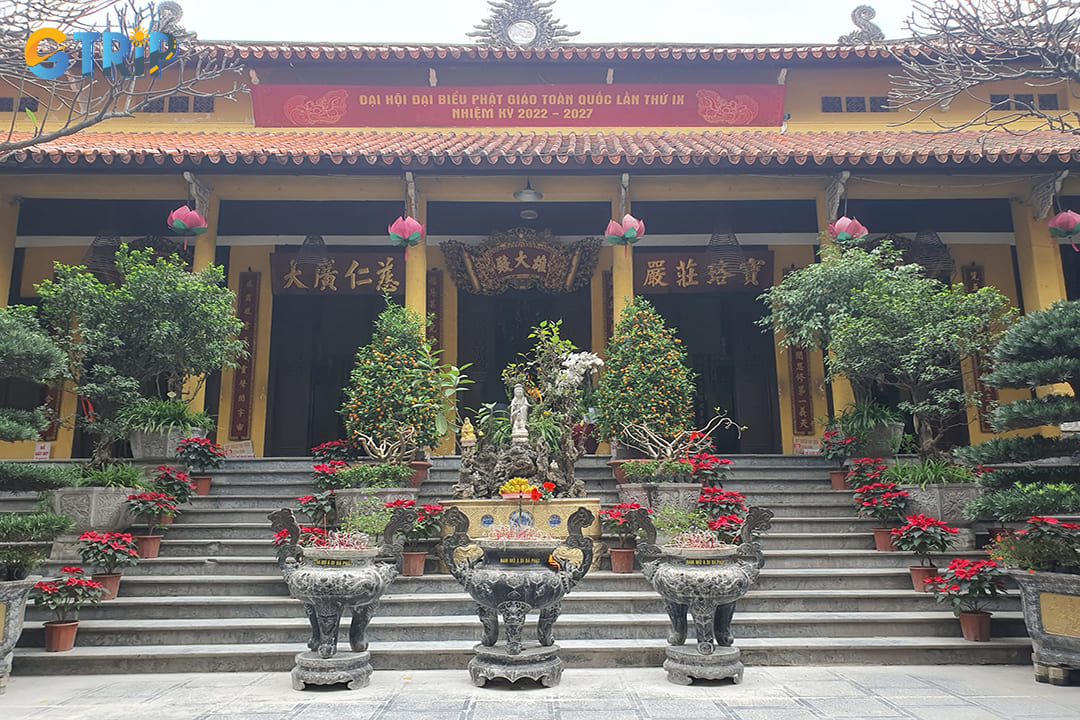
Quan Su Pagoda maintains an atmosphere of remarkable serenity that offers instant relief from urban chaos
Best time to visit Quan Su Pagoda
Quan Su Pagoda is open daily from 7:30 to 11:30 AM and 1:30 to 5:30 PM, with a midday break for monks’ prayers. Early mornings (7:30 - 9:00 AM) and late afternoons (4:00 - 5:30 PM) offer a peaceful atmosphere, ideal for quiet reflection and photography. The best seasons to visit are spring (February - April) and fall (September - November), when the weather is pleasant and festivals like Buddha’s Birthday, and Tet (Vietnamese New Year) take place. These festivals bring vibrant ceremonies and decorations, but also larger crowds. For a quieter experience, weekdays outside festival periods are recommended. Summer can be hot and rainy, while winter is cooler with occasional fog.
While festivals provide a unique cultural immersion opportunity, they attract numerous devotees and tourists. If you prefer a quieter experience to appreciate the pagoda's architecture and spiritual ambiance, consider visiting on regular weekdays outside festival periods.
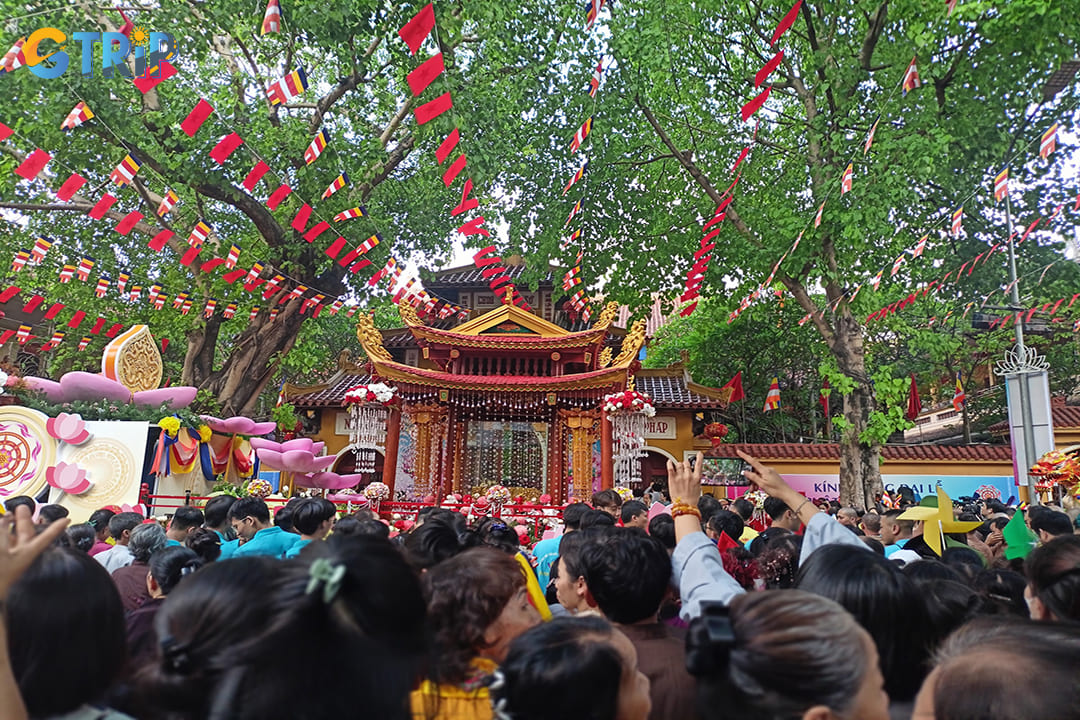
While festivals provide a unique cultural immersion opportunity, they attract numerous devotees and tourists
How to get to Quan Su Pagoda?
Reaching Quan Su Pagoda is straightforward with several transportation options available to tourists. Located in the heart of Hanoi at 73 Quan Su Street in Hoan Kiem District, the pagoda is accessible via public transportation, taxi services, or personal transport. Each method offers different advantages depending on your budget, time constraints, and comfort preferences.
By bus
Getting to Quan Su Pagoda via Hanoi's public bus system is both economical and convenient for travelers on a budget. Several routes service the area around the pagoda:
- Bus route 01: Connects Gia Lam Bus Station to Southern Bus Station, passing near Quan Su Street
- Bus route 32: Runs from Giap Bat Bus Station to Nhon, with stops within walking distance of the pagoda
- Bus route 40: Travels from Long Bien to Giap Bat, offering convenient access to the pagoda area
The average bus fare is approximately 7,000-9,000 VND ($0.30 - 0.40) per journey, making this the most budget-friendly option. Buses typically operate from 5:00 AM to 9:00 PM daily, with frequencies ranging from 10 - 15 minutes during peak hours and 15 - 20 minutes during off-peak times.
For the most comfortable experience, avoid rush hours (7:00 - 9:00 AM and 5:00 - 7:00 PM) when buses can become extremely crowded. From any bus stop near the pagoda, you'll need to walk a short distance of 3-5 minutes to reach the entrance.
By taxi or ride-hailing services
Taking a taxi provides a comfortable, direct route to Quan Su Pagoda, especially useful for visitors unfamiliar with the city or those traveling in groups. Hanoi offers numerous reputable taxi services:
| Taxi company | Hotline | Estimated fare |
|---|---|---|
| Vinasun Taxi Hanoi | 028.38.27.27.27 | From approximately 8,000 VND/km |
| Xanh SM Taxi | 1900.2088 | From approximately 12,000 VND/km |
| Mai Linh Taxi Hanoi | 024.38.333.333 | From approximately 12,000 VND/km |
| Hanoi Tourist Taxi | 024.38.56.56.56 | From approximately 11,000 VND/km |
For ride-hailing services, popular apps include:
- Grab: Most widely used throughout Vietnam
- Be: Local alternative with competitive rates
- Xanh SM: Known for clean vehicles and professional service
Approximate journey costs (excluding base fare):
- From Hanoi Old Quarter to Quan Su Pagoda: $0.6 × 2.6km \= $1.46 (approximately 36,000 VND)
- From Ho Chi Minh Mausoleum to Quan Su Pagoda: $0.6 × 2.7km \= $1.52 (approximately 37,500 VND)
When taking taxis, always ensure the driver uses the meter or confirm the price before beginning your journey to avoid overcharging, which can sometimes occur with tourists.
By motorbike
Renting a motorbike offers flexibility and independence, particularly appealing to adventurous travelers wanting to explore Hanoi at their own pace. To reach Quan Su Pagoda from central Hanoi by motorbike:
- From Hoan Kiem Lake/Old Quarter:
- Head south on Le Thai To Street
- Continue until you reach the Ba Trieu intersection
- Turn right onto Ba Trieu Street
- Follow Ba Trieu until you reach Quan Su Street
- Turn right onto Quan Su Street
- The pagoda will be on your left at 73 Quan Su Street
Motorbike rentals typically cost 100,000-150,000 VND ($4-6) per day from local rental shops. When driving in Hanoi, be aware that traffic can be chaotic by Western standards. Always wear a helmet (legally required) and drive defensively. Parking is available near the pagoda for approximately 5,000-10,000 VND ($0.20-0.40), though spaces can fill quickly during festival periods or weekends.

Reaching Quan Su Pagoda is straightforward with several transportation options available to tourists
Nearby attractions from Quan Su Pagoda
After exploring the spiritual tranquility of Quan Su Pagoda, you can easily extend your cultural journey by visiting several significant attractions within walking distance. The central location of the pagoda in Hanoi's bustling Hoan Kiem district makes it an ideal starting point for discovering other historical sites. Here's a comprehensive guide to three must-visit destinations all within a short stroll from Quan Su Pagoda.
Hoa Lo Prison (260 m)
Located just a 5-minute walk from Quan Su Pagoda, Hoa Lo Prison stands as a somber reminder of Vietnam's complex history. Built by the French colonists in the late 19th century, this facility was sarcastically nicknamed the "Hanoi Hilton" by American prisoners during the Vietnam War.
Hoa Lo Prison functions as a museum that offers you a glimpse into the harsh conditions endured by Vietnamese political prisoners during the French colonial period and American pilots during the Vietnam War. The museum houses numerous artifacts, including the original guillotine used for executions, prison cells preserved in their original state, and personal items belonging to former inmates.
When visiting Hoa Lo Prison, don't miss:
- The exhibition dedicated to Vietnamese revolutionaries who were imprisoned here
- The section displaying the tunnel used by prisoners for their famous escape in 1945
- The recreation of American POW quarters shows how U.S. pilots lived during their captivity
- The detailed timeline of events surrounding the prison's operational history
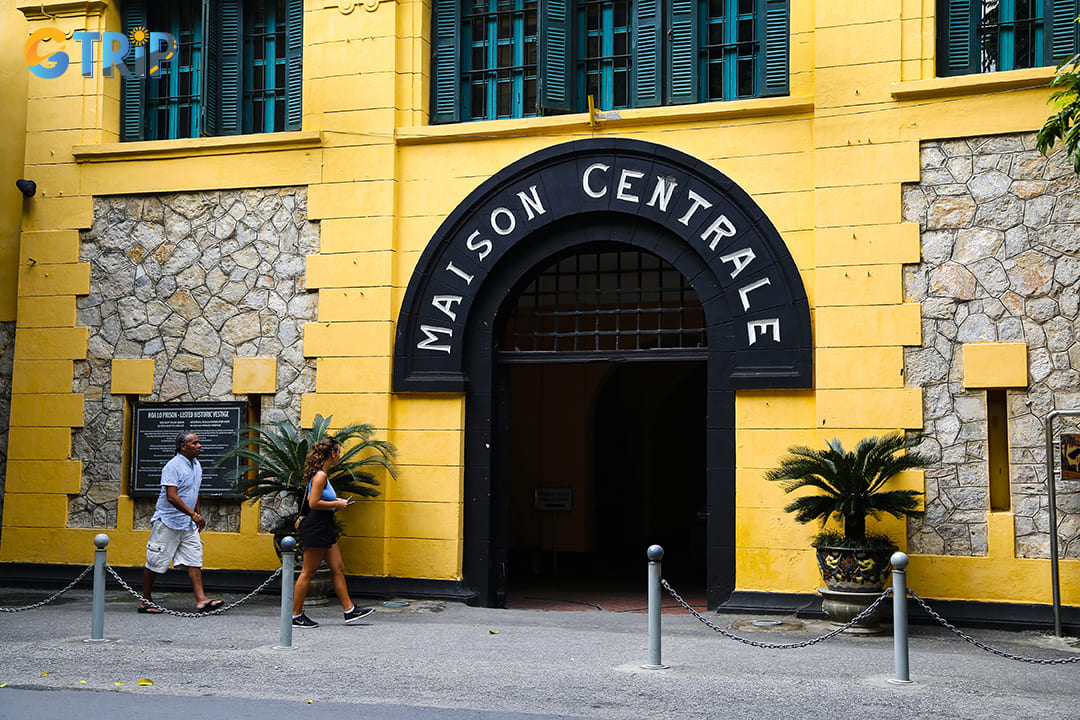
Located just a 5-minute walk from Quan Su Pagoda, Hoa Lo Prison stands as a somber reminder of Vietnam's complex history
Hanoi Police Museum (120 m)
At just 120 meters from Quan Su Pagoda, the Hanoi Police Museum offers a fascinating look at the evolution of Vietnam's police force. This lesser-known attraction provides a unique perspective on how law enforcement has developed throughout the country's turbulent history.
The museum showcases an impressive collection of uniforms, weapons, documents, and photographs chronicling the Vietnamese police force from its inception to modern times. Particularly notable are exhibits detailing the force's role during the resistance against French colonization and the American War. The museum also presents information about famous cases solved by the Hanoi police and their contemporary crime-fighting techniques.
You will appreciate:
- The chronological display of police uniforms and equipment through different eras
- Historic documents showing the establishment and evolution of Vietnam's police force
- Interactive displays demonstrating modern forensic techniques
- A collection of confiscated weapons and tools used in notable criminal cases
Hanoi Train Station (650 m)
A pleasant 10-minute walk from Quan Su Pagoda brings you to Hanoi Train Station, Vietnam's oldest railway station and a vital transportation hub since the French colonial era. Constructed in 1902, this historic station combines French architectural influences with practical functionality.
Beyond its practical purpose as a departure point for domestic and international train journeys, Hanoi Train Station holds significant cultural and historical value. The station played a crucial role during wartime, serving as a key logistics center. Today, it offers travelers the opportunity to experience Vietnam's railway system firsthand while admiring its architectural heritage.
When visiting the train station, consider:
- Exploring the grand main hall with its blend of colonial and Vietnamese design elements
- Watching the Long Bien railway line where trains pass through narrow residential areas
- Experiencing local life as vendors sell snacks and drinks to waiting passengers
- Taking photographs of historic locomotives if they're present on the platforms
Popular train routes from Hanoi Station:
| Destination | Duration | Departure times | Cost range |
|---|---|---|---|
| Sapa | 8-9 hours | Evening departures | 35-50 USD |
| Hue | 13-14 hours | Afternoon & evening | 40-70 USD |
| Da Nang | 15-16 hours | Multiple daily | 45-75 USD |
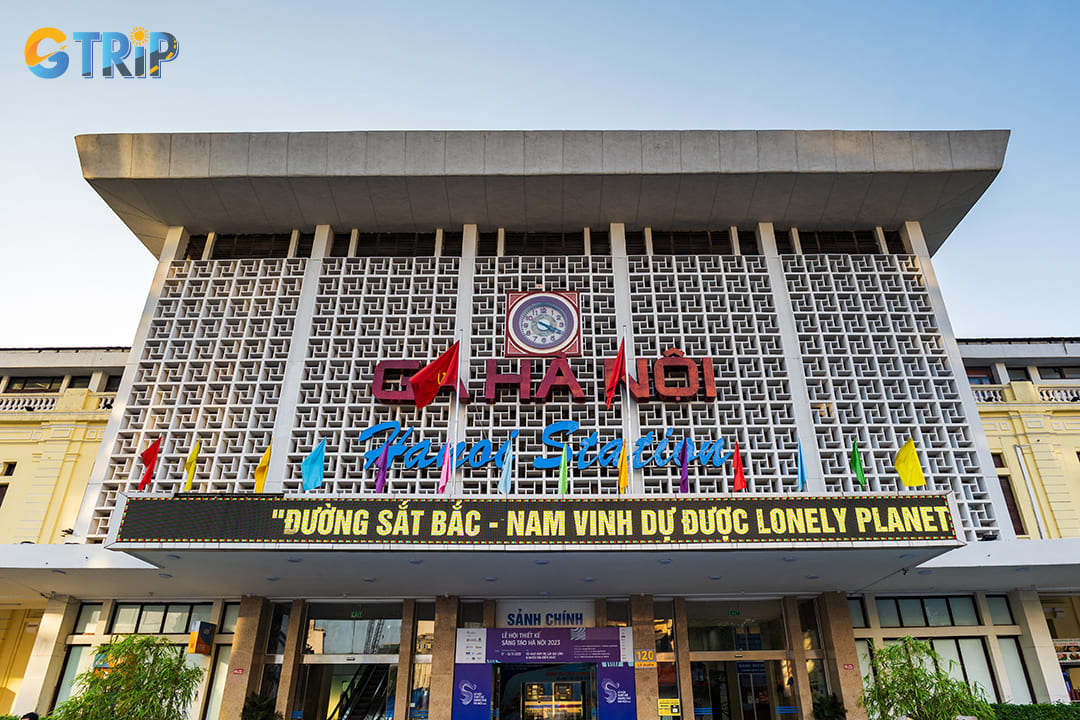
Hanoi Train Station, Vietnam's oldest railway station and a vital transportation hub since the French colonial era
Important notes when visiting Quan Su Pagoda
Quan Su Pagoda, being one of the most significant Buddhist temples in Hanoi, requires visitors to observe proper etiquette during their visit. As a religious sanctuary, there are several important guidelines to follow to ensure a respectful experience both for yourself and other worshippers.
Dress code and behavior
- Appropriate attire is essential: Wear modest clothing that covers shoulders and knees
- Avoid bright, flashy colors or clothing with offensive imagery
- Remove hats and sunglasses before entering the main worship areas
- Speak in hushed tones to maintain the tranquil atmosphere
- Walk gently and mindfully throughout the grounds - no running or boisterous behavior
- Shoes must be removed before entering certain sacred areas (look for signs or follow locals' example)
Photography and temple etiquette
- Ask permission before taking photos, especially during ceremonies or of monks
- Flash photography is strictly prohibited inside the main hall
- Never touch Buddha statues, offerings, or ritual objects without explicit permission
- Refrain from striking drums, bells, or gongs - these are ceremonial instruments
- Avoid pointing at sacred objects or Buddha images (considered disrespectful)
- Walk clockwise around sacred objects and stupas as per Buddhist tradition
Practical considerations
- Be aware of accessibility challenges - 11 steps lead to the main hall, which may be difficult for visitors with mobility issues
- Donations should only be placed in designated boxes, never around or on Buddha statues
- No littering - use provided trash bins or take your waste with you
- Visit outside of prayer times (early mornings and evenings) if you prefer a quieter experience
- Turn mobile phones to silent mode or power them off completely while inside the temple buildings
By observing these guidelines, you'll ensure a harmonious visit to Quan Su Pagoda while showing proper respect for Vietnamese Buddhist customs and traditions.

Quan Su Pagoda, being one of the most significant Buddhist temples in Hanoi, requires visitors to observe proper etiquette during their visit
As you reflect on the history and tranquility of Quan Su Pagoda, it’s clear why this spiritual haven holds a special place in the hearts of tourists. Its serene ambiance and cultural depth offer far more than just sightseeing. They provide a moment of introspection and connection. By immersing yourself in its calm surroundings, you’ve gained not only cherished memories but also an enriched understanding of Vietnamese heritage. If you find yourself pondering over what other hidden gems await or seeking deeper insights into destinations like this, consider booking Hanoi tours of GTrip - Vietnam Travel Agency. Let this experience be your starting point for exploring even more wonders.

